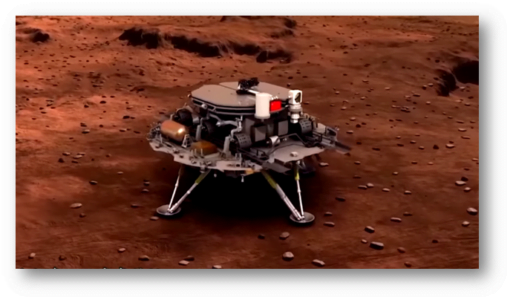Zhurong
Context:
China’s first Mars rover will be named Zhurong after a traditional fire god.
The rover is aboard the Tianwen-1 probe that arrived in Mars orbit on February 24 and is due to land in May to look for evidence of life.
What is Zhurong?
- It is China’s first Mars rover aboard the Tianwen-1 probe that arrived in Mars orbit in February 2020.
- It is named after a traditional fire god.
- The rover is part of Chinese space plans that include launching a crewed orbital station and landing a human on the moon.
- The rover’s title fits with the Chinese name for Mars i.e. “Huo Xing” or fire star.
- The top candidate for the landing site is Utopia Planitia, a rock-strewn plain where the U.S. lander Viking 2 touched down in 1976.
Background
- In 2019, China became the first country to land a space probe on the little-explored far side of the moon and in December returned lunar rocks to Earth for the first time.
- China would become the third country after the former Soviet Union and the United States to put a robot rover on Mars.
About Tianwen-1
- Its goals include analysing and mapping the Martian surface and geology, looking for water ice and studying the climate and surface environment.
- It is named after the ancient Chinese poem ‘Questions to Heaven’.
- It is an all-in-one orbiter, lander and rover which will search the Martian surface for water, ice, investigate soil characteristics, and study the atmosphere, among completing other objectives.
- It lifted off on a Long March 5 rocket, a launch system developed by the China Academy of Launch Vehicle Technology (CALT), from the Wenchang launch centre.
- It will be the first to place a ground-penetrating radar on the Martian surface, which will be able to study local geology, as well as rock, ice, and dirt distribution.
There are five core science objectives:
- Create a geological map of Mars.
- Explore the characteristics of the Martian soil and potentially locate water-ice deposits.
- Analyze the surface material composition.
- Investigate the Martian atmosphere and climate at the surface.
- Understand the electromagnetic and gravitational fields of the planet.
Source: The Hindu

